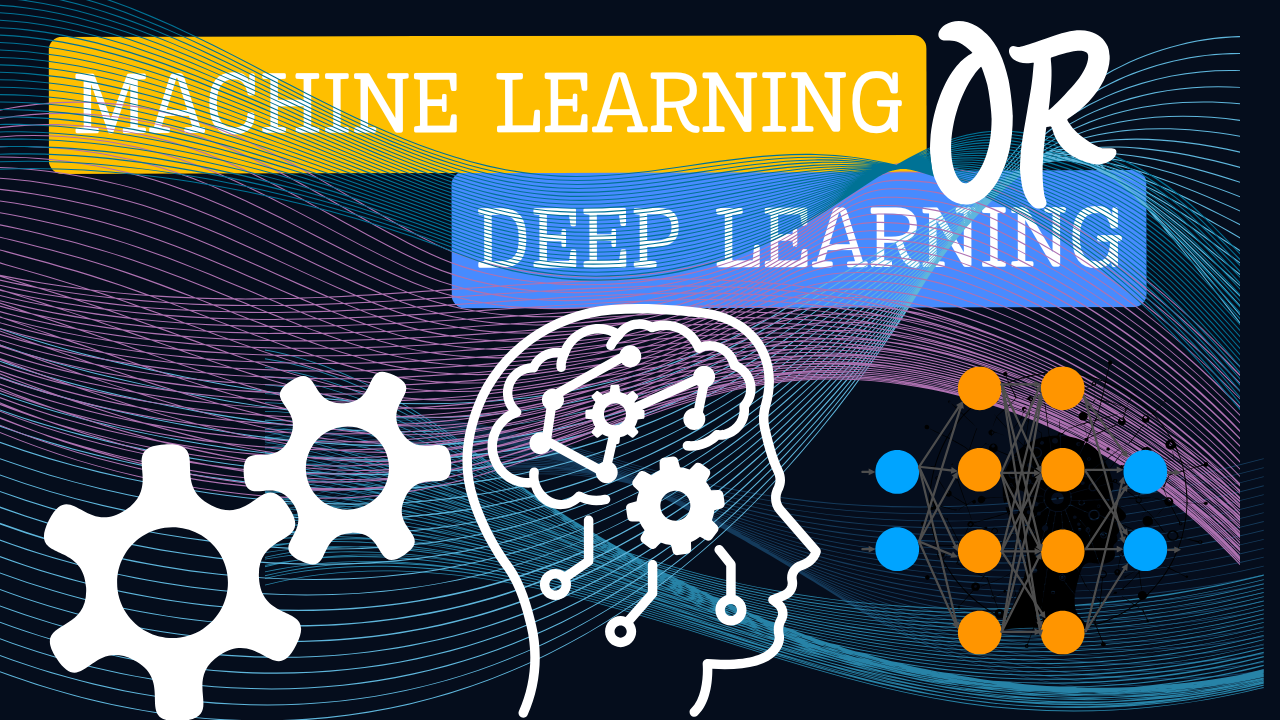Introduction: The Big Question
Every new data scientist wonders:
“If Machine Learning (ML) works well, why do we need Deep Learning (DL)?”
At first glance, ML algorithms like Random Forest, SVM, and Linear Regression seem powerful enough. But when you encounter real-world problems like:
- Building a chatbot that understands emotions
- Creating a movie recommendation system for millions of users
- Analyzing social media comments for trends
You quickly realize: Traditional ML falls short.
In this article, we’ll break down:
✔ Where ML fails
✔ Where DL shines
✔ Key differences (with examples)
✔ When to use which
1. Where Machine Learning Struggles
(And Why Deep Learning Takes Over)
Problem 1: Handling Non-Tabular Data
ML works best with structured (tabular) data. But what if your data is:
- Text (social media comments, emails)
- Images (medical scans, facial recognition)
- Audio (voice assistants, sentiment analysis)
Example:
- ML Approach: You’d manually extract features (e.g., word counts, TF-IDF).
- DL Approach: A neural network automatically learns patterns (e.g., LSTM for text, CNN for images).
🔹 ML Limitation: Requires heavy feature engineering.
🔹 DL Advantage: Learns hierarchical features automatically.
Problem 2: Scalability Issues
ML models degrade with larger datasets:
| Dataset Size | ML Performance | DL Performance |
|---|---|---|
| 1,000 rows | ✅ Works well | ✅ Works well |
| 100,000 rows | ⚠️ Starts struggling | ✅ Improves further |
| 1M+ rows | ❌ Fails | 🚀 Keeps improving |
Why?
- ML models (like SVM, Random Forest) don’t scale efficiently.
- DL models (like Transformers, CNNs) thrive on big data.
Problem 3: Complex Real-World Tasks
Can ML build a real-time language translator?
- ML: ❌ No (requires manual rules, limited vocabulary).
- DL: ✅ Yes (e.g., Google Translate uses Seq2Seq models).
Other tasks where DL dominates:
- Self-driving cars (CNN for object detection)
- Medical diagnosis (DL detects tumors better than radiologists)
- ChatGPT-style AI (Transformers for human-like text)
2. How Deep Learning Solves These Problems
Key Advantages Over ML
Advantage 1: Automatic Feature Learning
| Aspect | Machine Learning | Deep Learning |
|---|---|---|
| Feature Extraction | Manual (engineer selects features) | Automatic (neural nets learn features) |
| Example | Handcrafted “keyword” lists for spam detection | Word embeddings (BERT, GPT) understand context |
DL Wins: No need for manual feature engineering.
Advantage 2: Handles Unstructured Data
| Data Type | ML Approach | DL Approach |
|---|---|---|
| Text | Bag-of-Words (loses context) | Transformers (understand meaning) |
| Images | Manual edge detection | CNN (learns edges, textures, objects) |
| Audio | MFCC features (limited) | RNN/LSTM (understands speech patterns) |
Example:
- ML: Can’t accurately transcribe speech in noisy environments.
- DL: Whisper AI (OpenAI) transcribes speech almost perfectly.
Advantage 3: Better Performance on Big Data
📈 DL improves with more data, while ML plateaus:

Why?
- DL models have millions of parameters that adjust dynamically.
- ML models hit a ceiling due to fixed feature extraction.
3. When Should You Use ML Instead of DL?
DL isn’t always the answer. Use ML when:
✅ Small dataset (<10,000 samples)
✅ Structured (tabular) data (e.g., sales predictions)
✅ Need fast training (DL takes longer)
✅ Interpretability matters (ML models are easier to explain)
Example Use Cases for ML:
- Predicting house prices (Linear Regression)
- Fraud detection (Random Forest)
- Customer segmentation (K-Means Clustering)
4. The Future: ML + DL Hybrid Approaches
Many modern systems combine both:
- ML for structured data (e.g., user demographics)
- DL for unstructured data (e.g., user behavior in videos)
Example:
- Netflix Recommendation System
- ML: Analyzes user ratings (tabular data).
- DL: Processes video thumbnails & watch history (unstructured).
Conclusion: Which One Should You Learn?
| Factor | Machine Learning | Deep Learning |
|---|---|---|
| Ease of Learning | ⭐⭐⭐⭐ (Easier) | ⭐⭐ (Harder) |
| Data Requirements | Works on small data | Needs big data |
| Use Cases | Tabular data, fast results | Images, text, speech, complex tasks |
Final Verdict:
- Start with ML (master Scikit-Learn, XGBoost).
- Then learn DL (TensorFlow, PyTorch) for advanced AI.
- Combine both for real-world applications.
🚀 Now, which one excites you more? Let me know in the comments!

